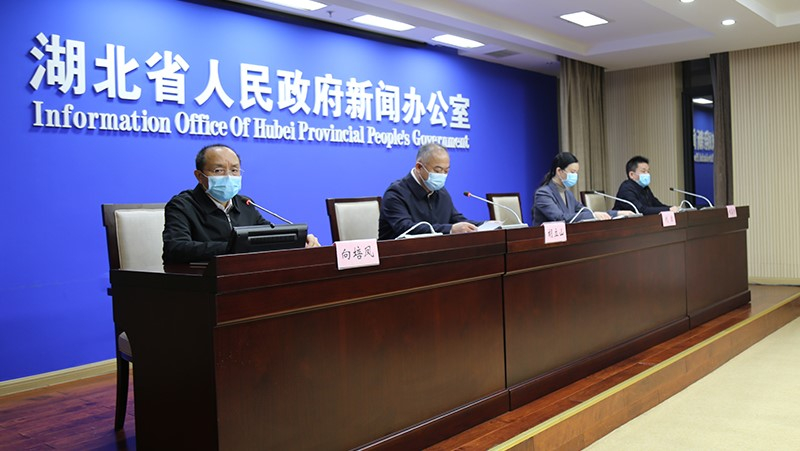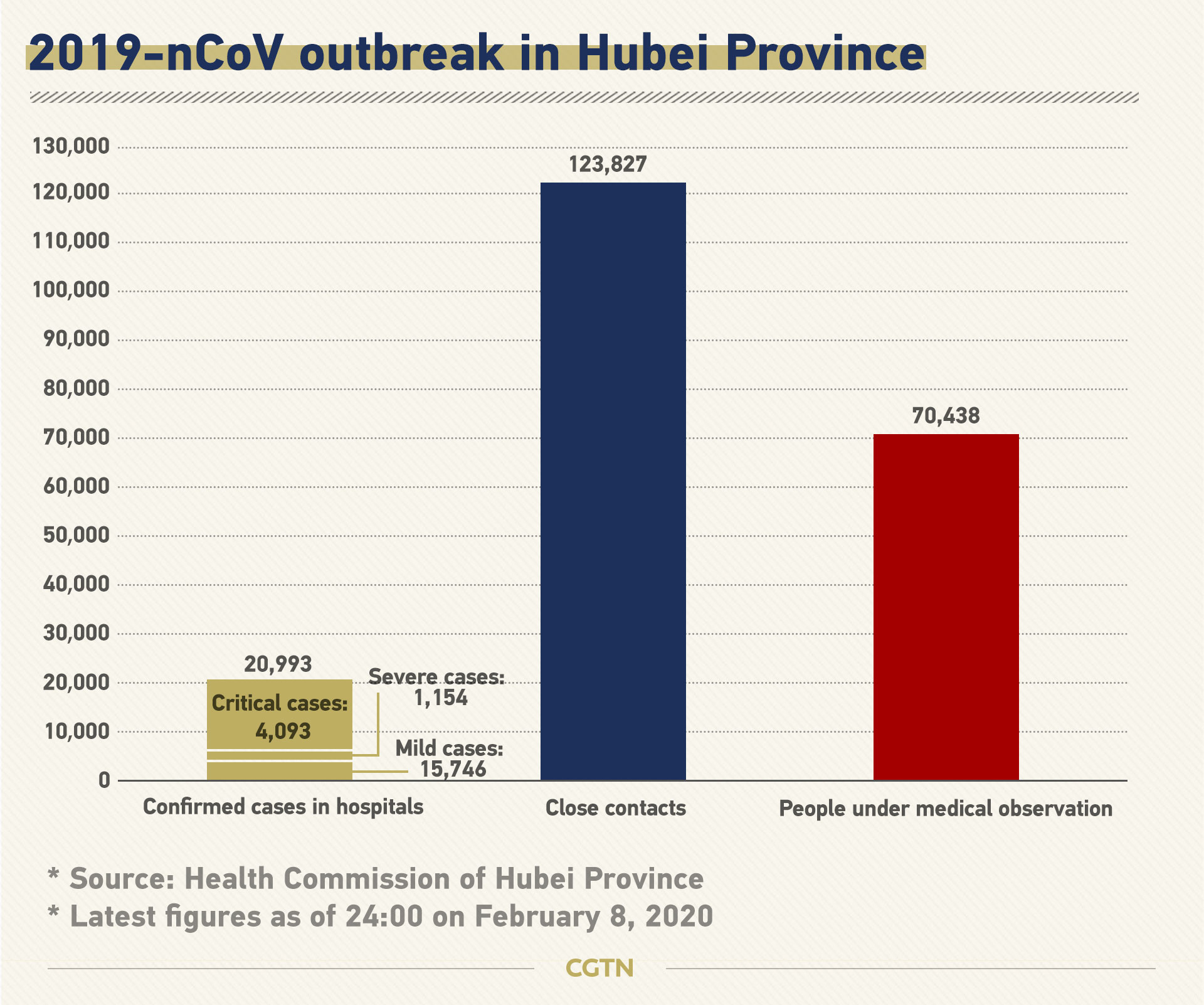Putting people under quarantine is one of the best ways to stop an infectious disease from spreading. Quarantine means separating confirmed and suspected patients from healthy people to cut the disease off from the rest of the world.
The current coronavirus outbreak (2019-nCoV) in Wuhan is no exception. And the situation is more difficult than a lot of others because the virus can lurk in a human body for as long as two weeks without causing any symptoms. So, people who seem healthy may still get ill or spread the virus to others.
It's not only about isolating the infected, it's about putting every possible case under quarantine. How can Wuhan make it happen?
In a recent press release, officials from the local CPC branch, government and hospital briefed the public on how they are carrying out the quarantine.

Officials in Wuhan hold press release to reveal details on the quarantine related to the 2019-nCoV on February 5, 2020. /Photo from Hubei Government
Officials in Wuhan hold press release to reveal details on the quarantine related to the 2019-nCoV on February 5, 2020. /Photo from Hubei Government
All the people related to the new-type pneumonia are divided into four groups:
Group 1: Patients confirmed with 2019-nCoV infection;
Group 2: Patients suspected with the infection but haven't been tested yet;
Group 3: Patients with fever that cannot be ruled out from 2019-nCoV infection because current tests still have shortcomings;
Group 4: People who had close contact with confirmed patients.

Each group has a designated place to go in the city's plan:
Group 1: City-level hospitals that can provide all-round care for the patients to recover;
Group 2: District-level hospitals that can provide enough care and carry out tests to make sure if they are infected or not;
Group 3: Community-level hospitals that can provide basic care, or temporary quarantine centers converted from schools, stadiums, etc.;
Group 4: Hotels located far away from residential area that can provide airflow and clean environment.
People under quarantine will receive medical treatment according to the group they are in, and get tested for the new virus.
City-level hospitals are required to send medial staff to help at the quarantine centers. District-level officials are required to lead a team of civil servants to ensure the basic living conditions of the quarantined people.
As of February 4, there are a total of 132 different types of quarantine centers, which can house 12,771 people.
Though that sounds like a lot, it's far from enough to quarantine and treat everyone, as statistics show there are more than 37,000 confirmed patients and nearly 29,000 suspected. A total of 188,183 people are under medical observation.


"We feel worried and concerned about the fact that the supply of beds doesn't meet the current need. We are under great pressure and are also targets of accusations from the public. We understand people are angry and anxious when their relatives can't get treated," Hu Lishan, deputy secretary of CPC's Wuhan branch, admitted.
For the rest, the apparently healthy residents in Wuhan, community volunteers will periodically check their conditions one by one. If a person falls into one of the four groups above, they will be sent to the corresponding centers. People who refuse to be put under quarantine and thus threaten the health of the community will be educated and persuaded by volunteers. If they then still refuse, police will force them into quarantine, according to the Law on the Prevention and Treatment of Infectious Diseases in China.
The officials also announced how a person can get out of the quarantine. When someone shows no symptoms of infection and gets a negative test result twice in a row, they can be released from the centers.
(Pan Zhaoyi, Gao Yun and Cao Qingqing collected data and Yin Yating created the graphs.)